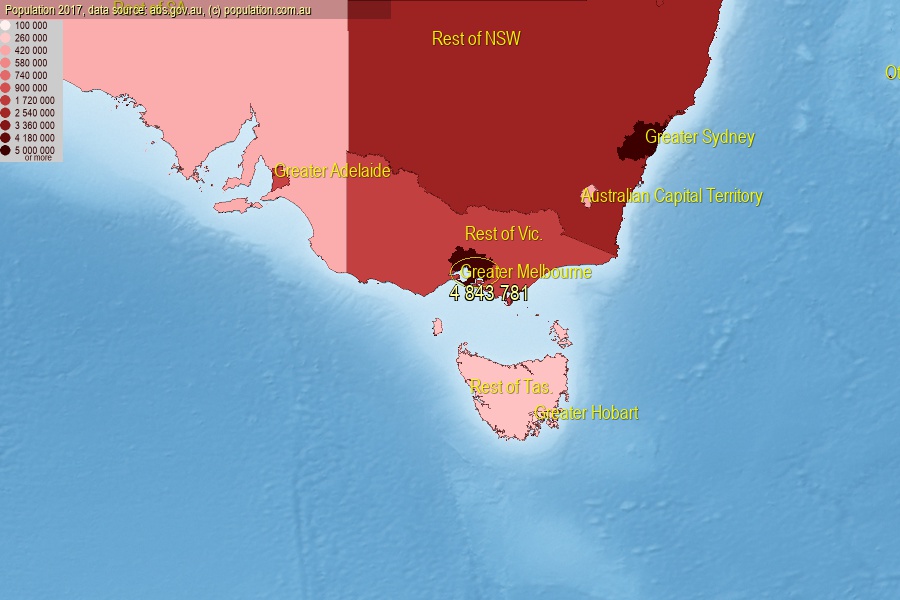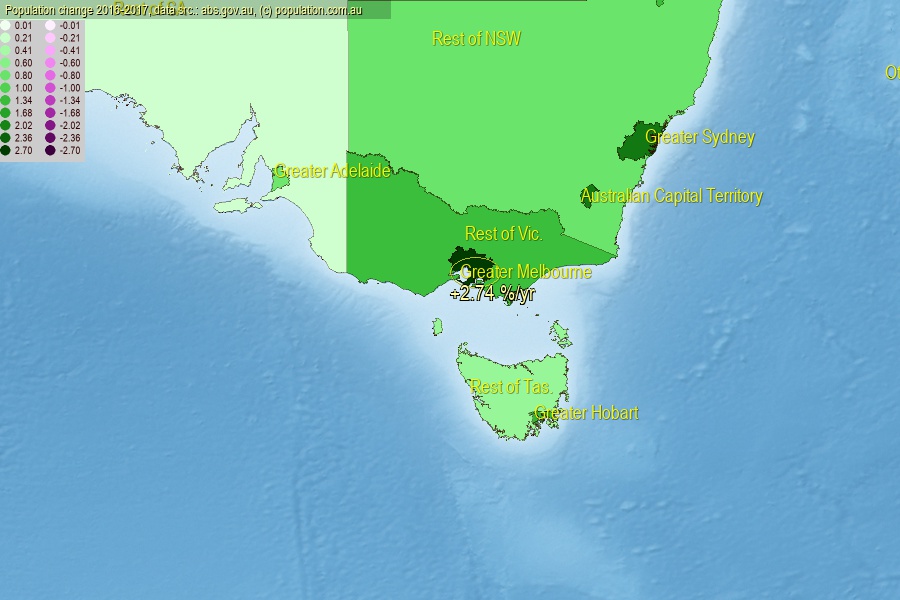 population.com.au
population.com.auLast official estimated population of Greater Melbourne (as Greater Capital City Statistical Area) was 4 843 781 people (on 2017-06-30)[2]. This was 19,6% of total Australian population. Area of Greater Melbourne is 9 992,00 km², in this year population density was 484,77 p/km² . If population growth rate would be same as in period 2016-2017 (+2.74%/yr), Greater Melbourne population in 2025 would be 6 015 319. [0]



Click to enlarge.
Population [people], population density [p./km²] and population change [%/year] [2]
[1991-1992] +0,72 %/Y
[1992-1993] +0,43 %/Y
[1993-1994] +0,37 %/Y
[1994-1995] +0,78 %/Y
[1995-1996] +1,10 %/Y
[1996-1997] +0,94 %/Y
[1997-1998] +0,99 %/Y
[1998-1999] +1,14 %/Y
[1999-2000] +1,26 %/Y
[2000-2001] +1,45 %/Y
[2001-2002] +1,30 %/Y
[2002-2003] +1,37 %/Y
[2003-2004] +1,33 %/Y
[2004-2005] +1,52 %/Y
[2005-2006] +1,71 %/Y
[2006-2007] +2,15 %/Y
[2007-2008] +2,33 %/Y
[2008-2009] +2,55 %/Y
[2009-2010] +1,84 %/Y
[2010-2011] +1,55 %/Y
[2011-2012] +2,31 %/Y
[2012-2013] +2,44 %/Y
[2013-2014] +2,42 %/Y
[2014-2015] +2,46 %/Y
[2015-2016] +2,80 %/Y
[2016-2017] +2,74 %/Y
[0] Calculated with linear interpolation from officially estimated population
[1] Read more about GCCSA on abs.gov.au
[2] Population data from Australian Bureau of Statistics / ABS.Stat (Population and density: 2017; change: 2016-2017)
[3] Digital Boundaries: Australian Statistical Geography Standard (ASGS) 2016.